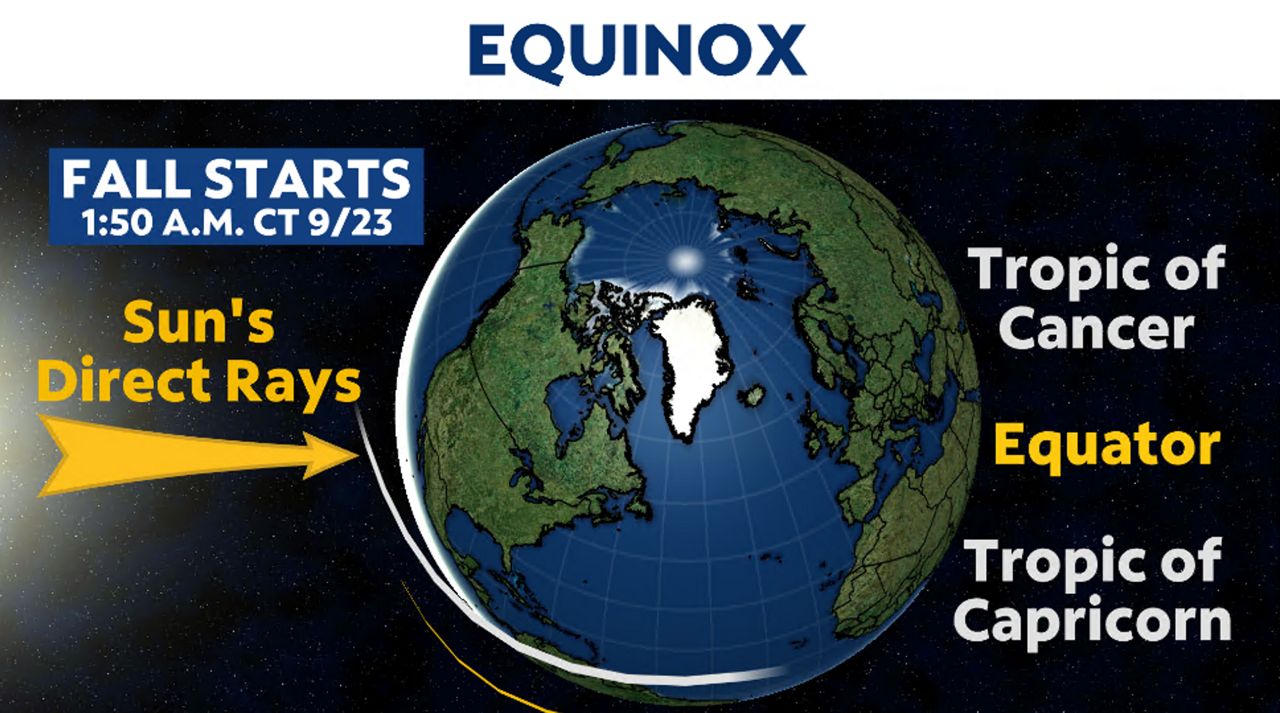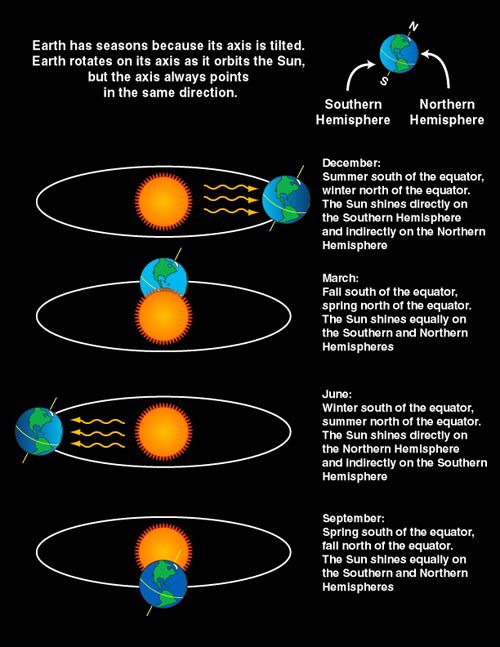The days become shorter; the air becomes crisp, and pumpkin-flavored everything appears in stores. This means fall is upon us, but why exactly is it called fall, and do we see equal day and night on the equinox?
Meteorological fall began on Sept. 1 to help with record keeping, but the season we are focusing on here is astronomical fall, which is based on the position of the Earth.
Why we have seasons
The Earth is a sphere and takes 365 ¼ days to orbit around the sun, hence the reason for a leap year, but it’s not the revolution of the Earth that causes our seasons, it’s the tilt. 23.5-degree tilt to be exact.
The Earth spins on its axis. When the Earth was still forming, something large hit it, causing it to get knocked off the straight up and down axis, resulting in a 23.5-degree tilt. As the Earth revolves around the sun, half of it faces the sun during certain times of the year and away from it during others.
(NASA)
During the summer, the Earth faces toward the sun, but fall is a transitional season. The sun’s rays pass directly over the equator on this day and, as the Earth slowly begins, its tilt away from the sun.

The season officially begins when the sun crosses the equator, and this year it will happen at 1:50 a.m. CT on Sept. 23. Daylight hours have been decreasing since the summer solstice and will continue to do so until the winter solstice.
How the name “fall” came to be
The history of this nomenclature goes back hundreds of years. According to historians, the season was once referred to as “harvest” because it was the time of year when farmers harvested their crops.
By the 17th century, the terms “autumn” and “fall” became popular vernacular. “Autumn” is derived from the Latin word “autumnus,” meaning “passing of the year.” While “fall” refers to the falling of leaves.
“Fall” is the popular term in America, while “autumn” remains the common phrase in Britain.
Equinox
Fall marks the halfway point between summer and winter and is often referred to as the equinox. Equinox means equal night in Latin and refers to nearly equal day and nighttime hours and this day usually occurs close to the first day, but not necessarily on the day.
This year, locations across the United States will see their 12-hour day and night occur anywhere from Sept. 25 – 27.
Fall facts and fiction
From balancing eggs and a broom on the equinox to other folklore. Here are the facts.
Our team of meteorologists dives deep into the science of weather and breaks down timely weather data and information. To view more weather and climate stories, check out our weather blogs section.

